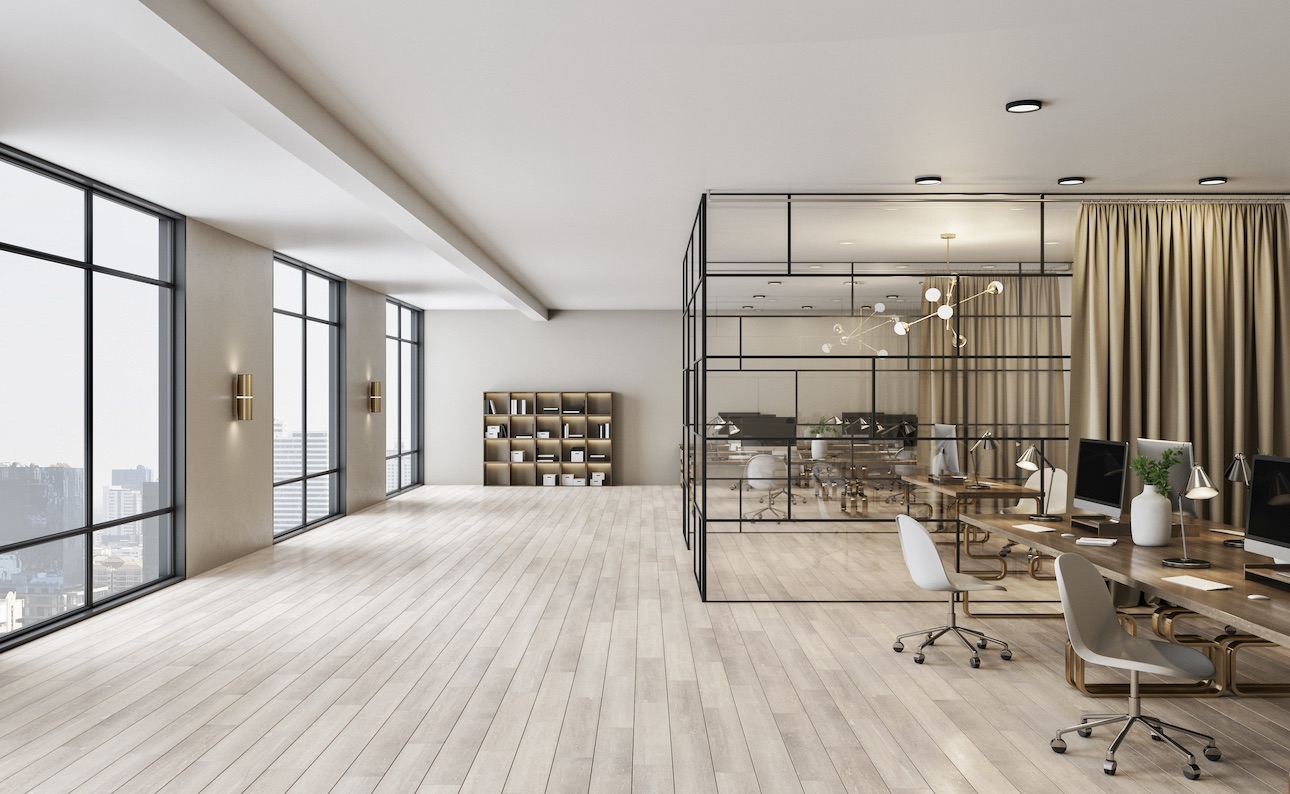
8 shared office space ideas designed for hybrid work
The way we work is changing. Hybrid working is the way of the future, and we’re seeing most companies take new, flexible approaches to where and when work is done. As a result, the demand for shared office space is changing too. Offices need fewer desks and more meeting rooms, social spaces, and collaboration areas.
Traditional office layouts with individual desks for every employee are no longer fit for purpose. Instead, offices need to be designed with a more flexible approach that can be adapted to the needs of both businesses and employees.
The basics of office design
How you design your office space largely depends on your company’s specific needs. This will include your organization’s culture, values, and mission. You need to build office spaces that encourage and enhance that culture — not work against it. In hybrid workplaces, that means shifting from the office being where all work happens to a place where collaborative work happens.
You want to design a versatile and user-friendly office space for hybrid work success. Here are a few ideas to help you create an office environment that can quickly adapt to changing needs in a hybrid world.
8 shared office space ideas for hybrid work
There are many different ways to create productive shared office spaces for hybrid work. Let’s take a look at some of the best and most popular solutions.
1. Jump on the hot desking trend
Hot desking is a shared office space concept where employees can choose to work from any available desk rather than being assigned to a specific workspace.
This flexible approach is perfect for hybrid working arrangements since employees split their time between working from home and working in the office. Companies don’t need to worry about desks sitting empty for half the week, and employees still have somewhere to work when they come into the office.
While hot desking can be a great choice for many companies, it does come with its own set of challenges, so work to find ways to solve issues around scheduling, storage, and more by following our list of hot desking best practices.
2. Try out movable workstations
Provide each employee with a moveable workstation that can be easily shared with others in the office. These desks can be easily reconfigured to create a variety of different layouts, from traditional cubicles to open-plan workspaces.
This way, when employees are working from home, their workstations can be used by others in the office. And when employees are in the office, they can use any available workstation and configure it to suit their needs on any given day.
3. Create welcoming cafes and kitchens
Cafes and kitchens are more open and spacious than traditional offices, making them perfect for creating a relaxed and social working environment. In addition, these areas typically have a variety of amenities that can make employees more comfortable, such as coffee machines and microwaves.
Incorporating these types of social working areas into your office layout is a great way to make the office a more appealing place for employees to be. After all, the best thing about coming into the office is the chance to connect and collaborate with coworkers, which is even better in a comfortable, welcoming environment!
4. Shake up your meeting rooms
As the workplace continues to evolve, so too must the meeting room. Where once a large boardroom table was the standard, now smaller, more intimate spaces are being favored for both in-person and hybrid meetings. Consider how your teams use meeting rooms and work to redesign rooms based on actual usage.
The modern meeting room should include comfortable seating, all the latest audio and video equipment to facilitate hybrid meetings, and should make use of smart room booking software to make scheduling easier.
5. Open up your office plan
The open plan of shared office space is a great choice for hybrid work because it provides plenty of space for employees to spread out and work comfortably. Desks are usually positioned to face each other, creating a collaborative environment.
Plus, open plan offices make it easy to reconfigure things down the line since there are fewer physical walls and barriers to change.
Just be aware that open plan offices can be loud and might not be ideal for every employee’s work style. To counter any potential issues, try to set aside some parts of the office for quiet work to ensure everyone can stay productive.
6. Become pod people (in a good way!)
This layout is based on the idea of creating small “pods” within the office. Each pod is made up of several workstations clustered together. Try creating pods for specific teams or a group of pods for a department. Or you could create cross-team pods that encourage people from different parts of the business to work together.
7. Create neighborhoods
Another great option is to create small “neighborhoods” within the office. You can create neighborhoods based on departments, different kinds of tasks, or a combination of the two. Each neighborhood should have its own dedicated workstations, meeting spaces, and break areas. This allows employees to easily transition between collaborative and individual work as needed. And by grouping departments together, you make it easier for people to collaborate and consult with each other.
8. Consider Activity based working
Activity-based working (ABW) is a great way to tackle the challenges of hybrid office planning.
ABW offices are designed to promote collaboration and provide employees with a variety of work settings to choose from throughout the day. These areas are designed around the tasks that will be completed in each different area. Some parts of the office will be focused on informal meetings and ideation sessions, some will be focused on focused work, and others will be geared towards socializing and relaxing between tasks.
This type of flexible workspace has been shown to increase employee satisfaction, productivity, and creativity, improved communication, and reduce stress.
Smartway2 can help your redesigned office space run smoothly
No matter which types of workspaces you choose to try, you’ll need to make sure everyone can use them easily. Turning to a robust workplace scheduling solution is the best way to make the most of your new office layout.
With Smartway2’s powerful room and desk booking solutions, you can easily book meeting rooms, reserve workstations, welcome visitors, and even order lunch — all from your phone!
Request a demo today to learn more about how Smartway2 can help your office run smoothly.


